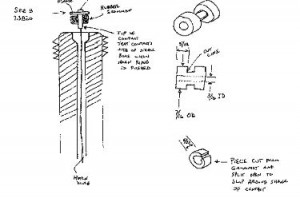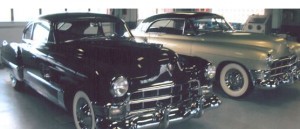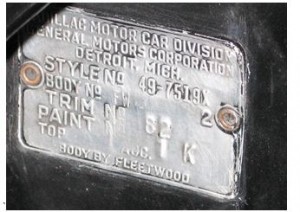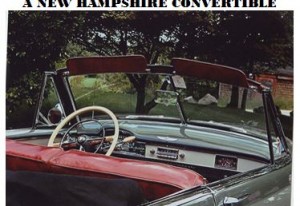Most radial tires change the “stance” of the car, as they are wider and of a smaller overall diameter than the original 8.20 X 15 bias ply tires. Besides the difference in appearance, the greater width of radial tires can cause two problems:
1. Greater steering effort is required when parking or maneuvering at low speeds because “more rubber is on the road”;
2. Under certain conditions the rear tires could scrape the fender skirts; for example, when rounding a curve at higher speeds.
According to one tire company official, another problem is that when going over a bump radials exert much more lateral pressure on the wheels than the original tires. Since ’49 wheels are 2 halves welded together, in extreme circumstances the car could go over a harsh bump and, allegedly, the wheel will split in two. On the other hand, many knowledgeable people say this is an old husband’s tale and that, in general, ’49 owners have no problem at all with radials; they last longer, ride better and may be safer.
A good source of radials tires is Diamond Back in South Carolina, since one of their lines of tires (possibly called “SE”) has dimensions that are closer to 8.20 X 15s than other radials; that is, they are narrower and taller. Diamond Back advertises in Hemmings, usually on or near the back cover.
If you stay with the original-type 8.20 X 15 bias-ply tires, they have their virtues, too. For one thing, until they wear significantly, many owners find that they ride very well, even at high speeds, and require less effort when parking. Secondly, bias-ply tires cost less. In fact, some suppliers occasionally sell “seconds” or “blems”, with minor blemishes on the white sidewall but no structural damage, for not much more than $100 each. Thus, while bias-ply tires don’t last as long as radials, if you don’t drive your car much, in the long run they will provide an entirely satisfactory ride, will save you money and will look authentic. So, the question then becomes, “why bother with radials”? (Personally, I use bias-plies and drive my car a lot.)
There is probably no hard and fast conclusion to this discussion, so whether you choose to use bias ply or radial tires is ultimately a matter of personal preference. If you have a an opinion one way or another that you would like to share with the rest of us Forty-Niners please email the Times at jaysfriedman@yahoo.com or snail mail to Jay Friedman’s address in the CLC Directory




